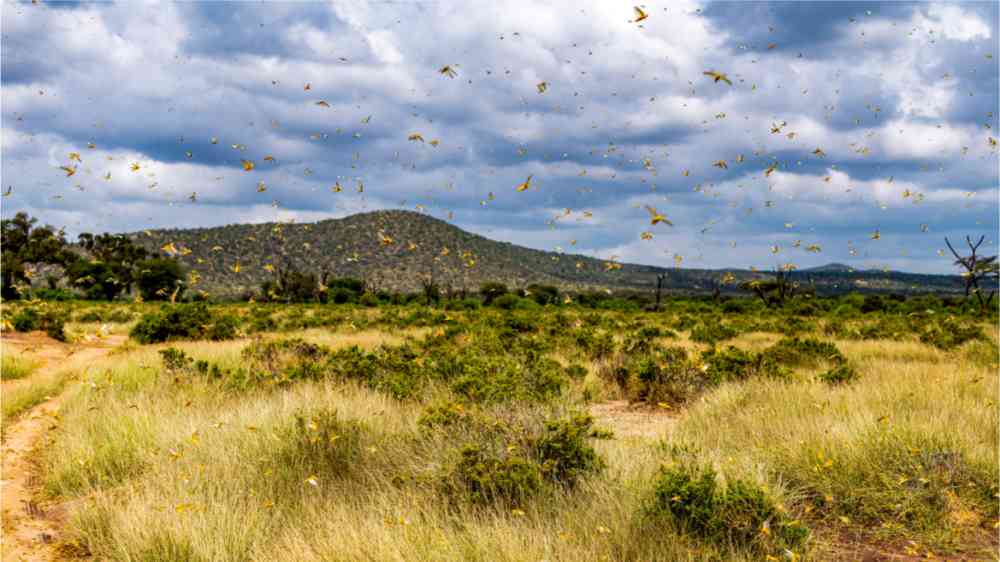FAO empowers Kenyan desert locust frontline counties in surveillance and reporting

As part of its ongoing efforts to maintain the preparedness to fight the desert locust, especially in invasion countries, the Food and Agriculture Organization of the United Nations conducted a crucial refresher training for locust officers from frontline counties as well as crop protection officers from Plant Protection and Food Safety Directorate. Participants were equipped with principles of desert locust survey and reporting.
Kenya is currently free from desert locust. However, developing capacities should continue so that the country is always prepared to manage any invasion. Garissa, Isiolo, Marsabit, Samburu, and Wajir remain frontline desert locust invasion counties.
Understanding desert locust dynamics
The core session of the training was dedicated to understanding the biology, ecology and behavior of desert locust. Participants delved into the taxonomic features of Shcistocerca gregaria that distinguish this species from other grasshoppers and locusts, which is fundamental for accurate identification during surveys, and for effective monitoring and management of locust populations.
Classroom sessions were structured to provide a solid theoretical foundation. Discussions and presentations covered the necessity of surveys, the survey process, and detailed planning, preparation, implementation, and follow-up stages. Participants received skills that ensure that they are conversant with the process of conducting locust surveys.
Hands-on practice with eLocust3m App
To bridge the gap between theory and practice, demonstration exercises were conducted on the use of survey equipment. These sessions culminated in practical field exercises where sawdust was used to simulate locusts. This simulation highlighted the challenges associated with surveys, particularly the difficulty of locating all locusts in a given area.
During the field practical exercise, participants conducted assessment and collection of data using eLocust3m Pro app. This exercise provided valuable experience in ensuring that the locust survey officers could efficiently collect and submit field data. This practical experience was designed to mimic real-world conditions, ensuring that trainees are well-prepared for actual locust survey and surveillance.
“Combining both theory and practical experiences enhances the capacity of locust officers to effectively survey and report desert locust activity in their respective counties any time they are called upon, ultimately safeguarding crops and livelihoods in vulnerable regions,” George Ongamo, FAO Locust Management Expert, noted after the training.
The training also provided a structured approach on sequencing, selecting the training methods, and evaluating the impact of the training.
Moving forward
Following the training, desert locust frontline counties will prepare a list of all field experts that participated in the 2019–2022 desert locust campaign to build a database of available officers that can be called upon during emergencies.
FAO provided the support under the framework of the USAID/BHA funded project "Desert Locust risk reduction in the Central Region and the Horn of Africa (GCP/INT/1032/USA)".